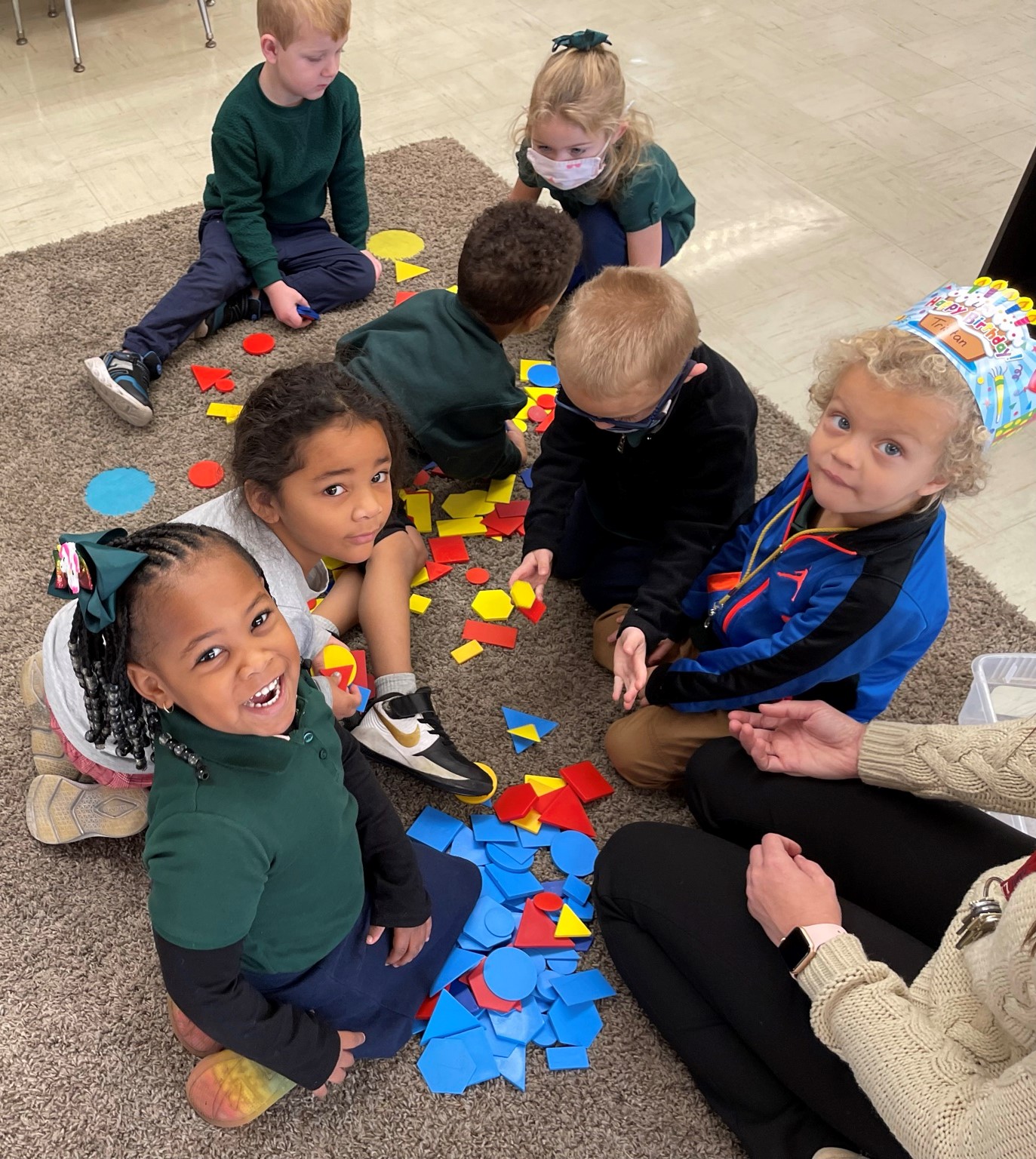
The Archdiocese of Milwaukee has the ninth most Catholic schools in the United States. (Photo by Larry Hanson)
The Archdiocese of Milwaukee serves more than 28,000 students and their families through its 85 elementary and 16 high schools. Each school is unique but tied together with a common thread and vision.
As former Superintendent of Schools for the Archdiocese of Milwaukee Kathleen Cepelka once wrote, “The most defining characteristic — Catholic schools [are] centered in the person of Jesus Christ.”
The Archdiocese of Milwaukee has the ninth-largest Catholic school system in the United States based on the number of schools, and the 14th largest based on the number of students.
Mary Tretow, principal of St. Mary’s Visitation in Elm Grove, agrees: “Everything we do in our Catholic schools is to build the Kingdom of God. That’s what our mission is. The Catholic Stewardship Appeal feeds exactly into what we do.”
Tretow is thankful for all those who donate, from those “who might just be able to give a few dollars or pennies to some of our large donors. It all matters, it all makes a difference because we’re here to build the Kingdom of God.”
She pointed to how the archdiocesan schools office supports Catholic educators’ hard work. From guidance on the curriculum, particularly on how to teach children about Catholic Social Responsibility and their responsibility to the world as faithful Catholics, to leadership training and marketing support so that families can learn that our Catholic schools are phenomenal places to raise our children, Tretow sees the impact the Catholic Stewardship Appeal has on the lives of her students.
“That’s why I would like people to contribute to the appeal; all those things make a difference for all the children we’re educating,” Tretow said. “When I have 3-year-olds come to school, I look at them, (realizing) eventually they’ll be adults sitting in the pews. As they go through all the cycles of their lives, through all the sacraments, all those things make a difference.”
Tretow is grateful for the support the schools office provides, especially when it comes to safety.
“That’s a huge thing,” Tretow said. “How do we keep our school safe? We spent a lot of time talking about what that looks like. How do we make sure this is a safe environment for everybody to learn? How do we keep our building safe?”
Bruce Varick, associate superintendent of schools, explained that after the Wisconsin legislature passed Act 143 in 2018, the state provided $100 million in grants for schools to use to upgrade school security. Those funds were primarily used for additional school cameras, updating locks and improving school entrances. While a number of the schools were able to take advantage of that grant opportunity, Varick explained there’s still a “lot of work” to do.
Visitor identification systems would allow school personnel to quickly identify whether an individual should be denied access to a student or students. Regarding exterior doors, Varick explained that key fobs are safer than keys. Upgrading classroom doors to lock quickly from the inside also provides an additional layer of security. Varick noted, “Studies of previous shooting events have shown that, to date, there has been no instance where the shooter took the time to breach a locked classroom door to get in.”
Finally, the training of staff, not only to prevent tragedies but to respond to critical incidents —any events that disrupt the normal rhythm of the school, including the death of a school community member after an accident or illness — would empower the schools to be Christ to their school families in the midst of sorrow.
“We were able to do that (in 2021) after the (Waukesha) parade tragedy,” Varick said. He hopes to expand the support schools can give.
In December, a two-day formal workshop through the National Association of School Psychologists devoted to psychological first aid and recovery after a critical event was offered to principals and counselors. Varick was grateful for the opportunity to bring this training to the archdiocese. Varick hopes to form Catholic school personnel who would be able to go help another school if a critical incident takes place.
